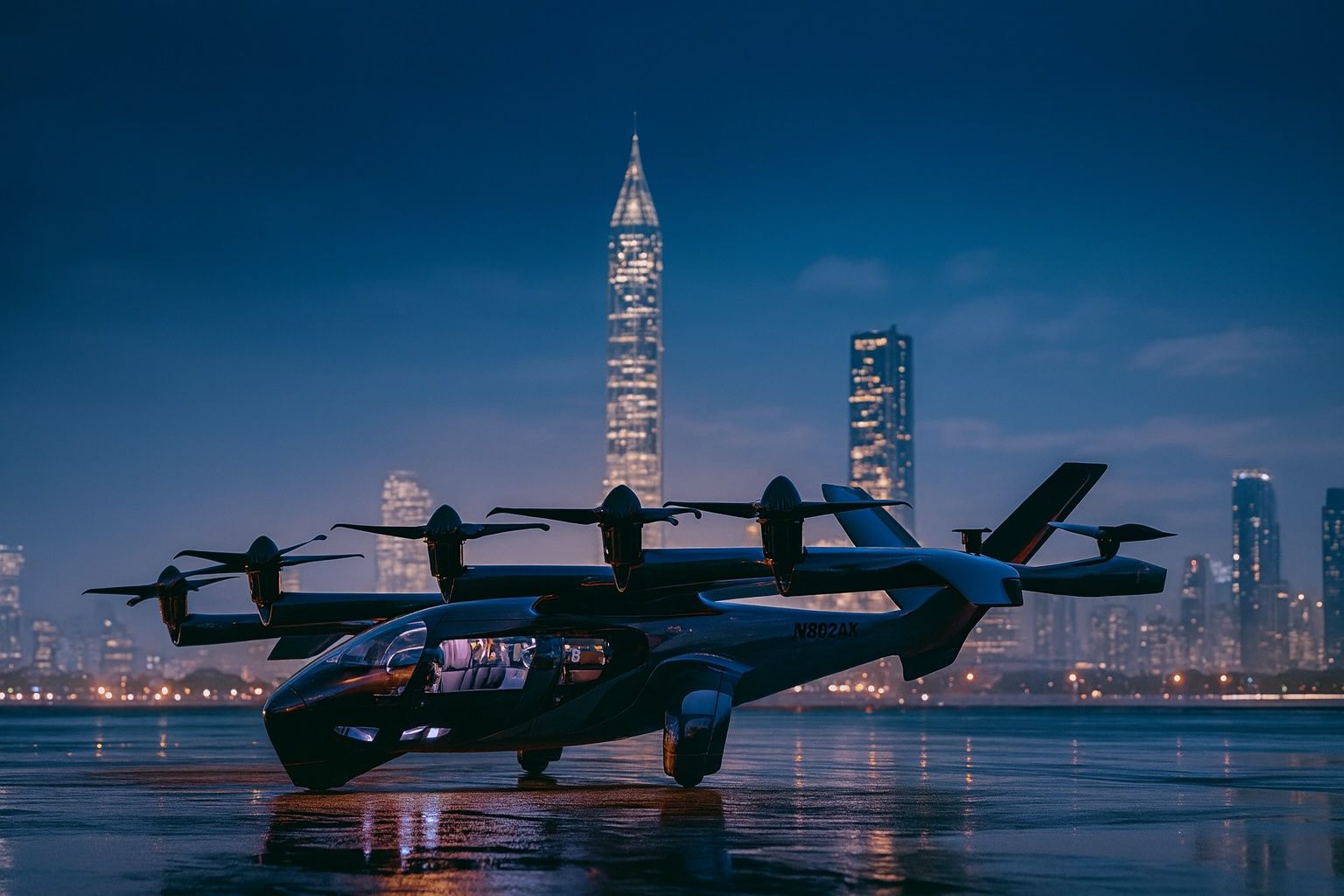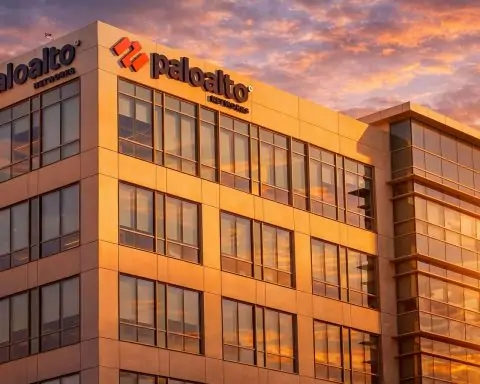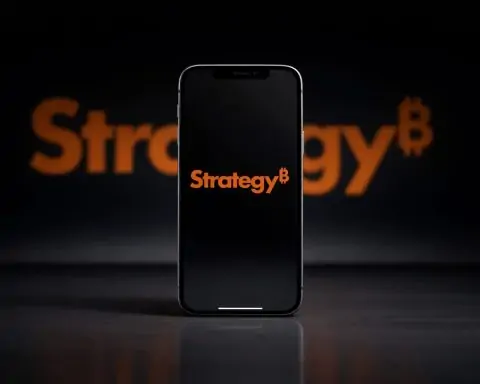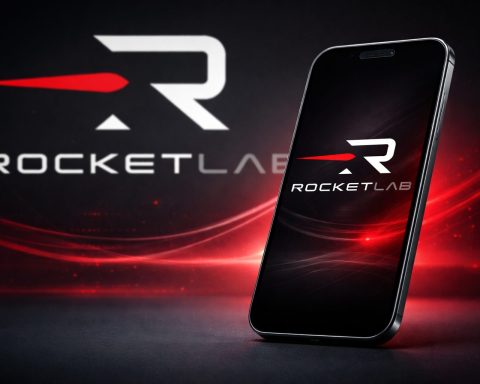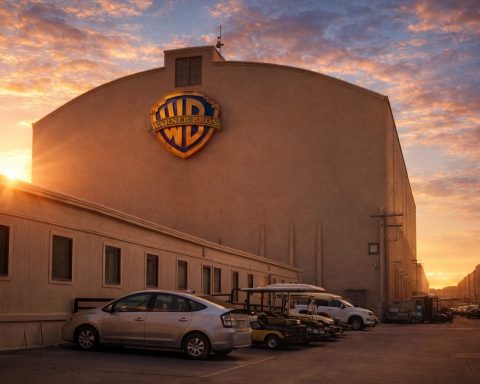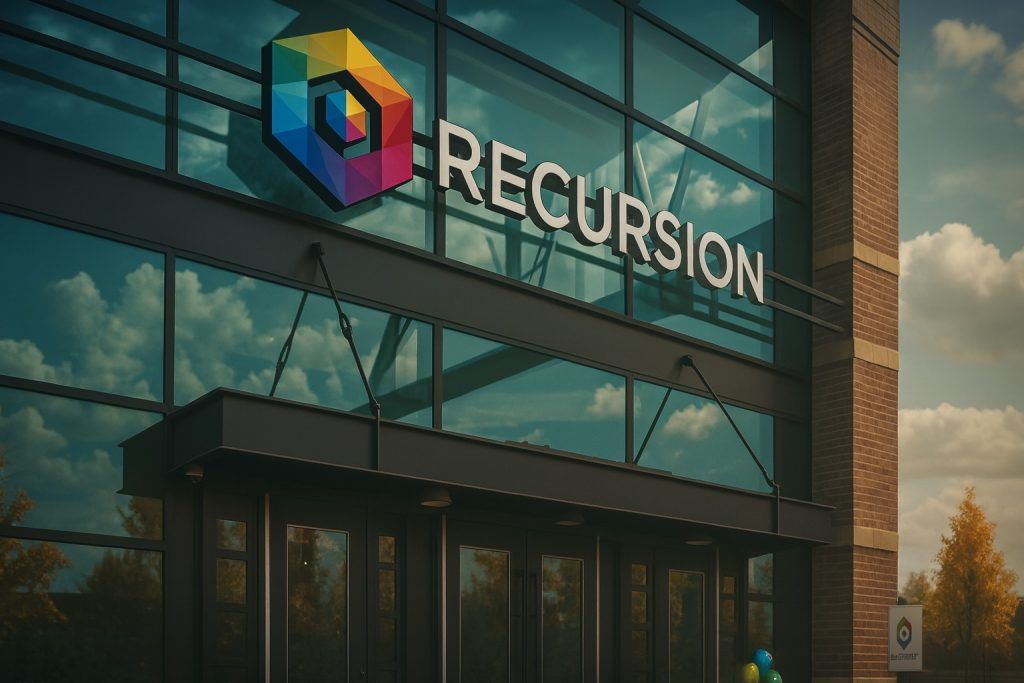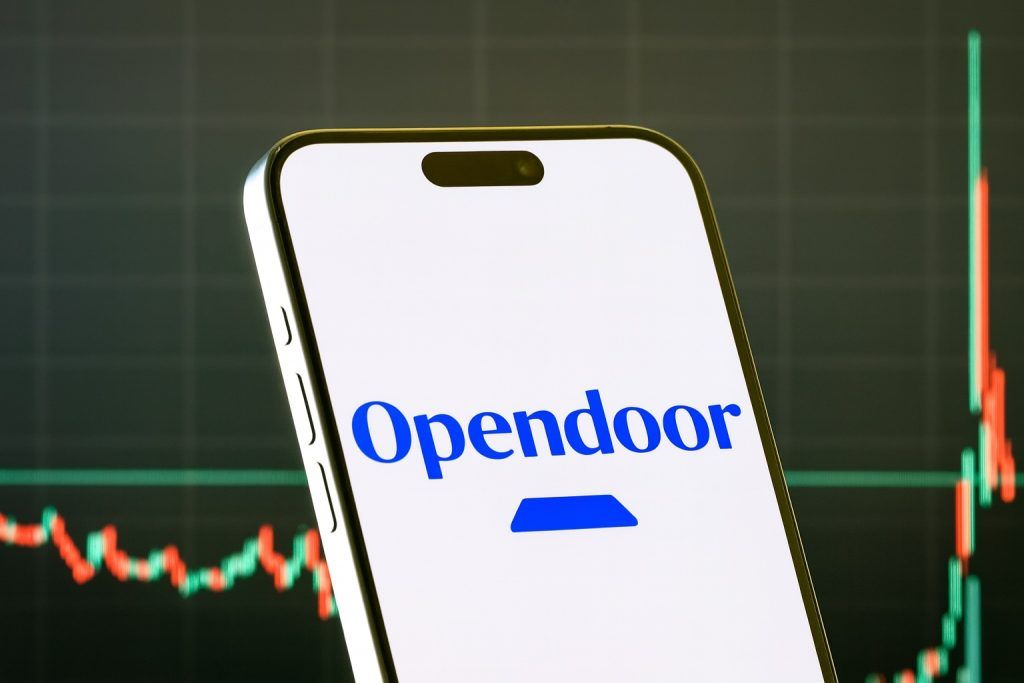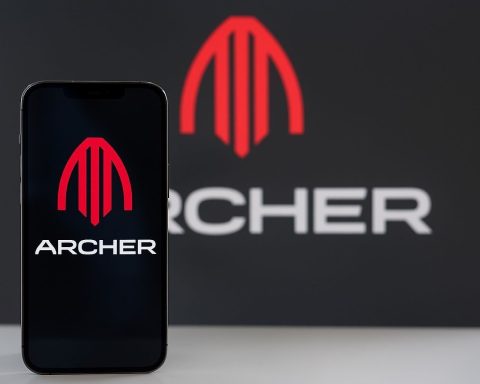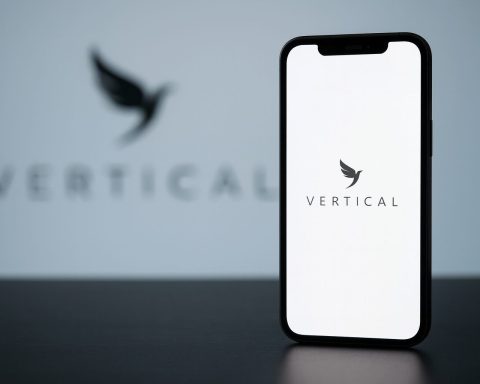- Landmark Korean Air partnership: Archer Aviation’s stock surged over 5% on October 20, 2025, after announcing Korean Air will purchase up to 100 of Archer’s Midnight electric air taxis [1] [2]. The exclusive deal positions Archer in South Korea’s nascent eVTOL (electric vertical takeoff and landing) market and underscores a global race to secure airline partners and regulatory approvals [3].
- Stock price and momentum:ACHR traded around $11.8 per share on Oct 20 (up ~4–6% intraday) [4] [5]. The stock has been on a tear – up ~270% year-over-year and ~21% year-to-date – vastly outperforming the S&P 500 [6]. However, shares remain volatile, spiking on speculation (e.g. Tesla partnership rumors) and dipping on profit-taking [7] [8].
- Big wins and recent news: Last week Archer won a bid to acquire ~300 patents from bankrupt rival Lilium for €18 million [9], expanding its IP portfolio above 1,000 patents [10]. Archer’s shares jumped ~8.5% on that Oct 15 news [11]. Earlier in October, Archer partnered with Cleveland Clinic Abu Dhabi to build the UAE’s first hospital-based “vertiport” for eVTOL medical transport [12], and its Midnight aircraft wowed crowds in public demo flights at the California International Air Show (Oct 4–5) [13] [14].
- Global partnerships expanding: Archer’s roster of partners spans aviation giants and airlines worldwide. United Airlines is an investor planning to deploy Midnight air taxis for short airport hops, Stellantis is co-building Archer’s Georgia factory, and Boeing is a strategic backer [15]. In Asia, a Japan Airlines–Sumitomo JV (Soracle) placed a $500 million order for 100 Midnight aircraft to launch air taxi services in Tokyo and Osaka [16]. Now Korean Air will help launch Archer’s eVTOL in South Korea, and even Los Angeles has named Archer the official air mobility provider for the 2028 Olympics [17].
- eVTOL milestones and FAA progress: Archer’s Midnight aircraft, a four-passenger electric air taxi, has achieved impressive test flights – reaching 10,000 feet altitude and flying 55 miles in ~30 minutes [18]. These high-altitude, high-speed tests (up to 126 mph) demonstrate performance headroom as Archer works toward FAA certification [19] [20]. The FAA granted Archer a Special Airworthiness certificate and a Type Inspection Authorization (TIA), allowing FAA pilots to begin testing Midnight – key steps toward full type certification by around 2026 [21]. U.S. regulators and the White House have signaled support through a new eVTOL Integration Pilot Program to fast-track real-world trials [22].
- Analyst outlook and risks: Wall Street is cautiously bullish on Archer. The consensus rating is “Buy/Strong Buy” with price targets ranging widely from about $4.50 up to $18; the average 12-month target in the mid-$12s is roughly around the current price [23] [24]. Analysts praise Archer’s technological progress and hefty ~$1.7 billion cash reserves [25], but note it remains pre-revenue and unprofitable (burning >$100 million per quarter [26]). Archer’s Q3 net loss is expected around $110–130 million [27]. The urban air mobility market is crowded and high-risk, with rivals like Joby Aviation, Beta Technologies, and aviation giants in the fray – making Archer something of a binary bet on an eVTOL future versus regulatory hurdles and slow adoption [28].
Korean Air Deal Lifts ACHR Stock
Archer Aviation made headlines on Oct. 20 by inking a partnership with Korean Air to commercialize its Midnight eVTOL air taxi in South Korea [29]. The deal includes a potential order for up to 100 Midnight aircraft, marking Archer’s first major airline customer in Asia. News of the “landmark partnership” sent ACHR shares up about 4–6% in early trading that day [30] [31], as investors cheered the validation by a global flag-carrier. Korean Air – with five decades of aerospace experience – will help Archer deploy Midnight across multiple use cases, starting with government and emergency applications in Korea [32]. The move aligns with South Korea’s national priorities: its transport ministry declared advanced air mobility a priority and is actively embracing urban air taxis [33].
This exclusive collaboration is a major credibility boost for Archer. CEO Adam Goldstein hailed Korean Air’s “aerospace expertise and strategic vision” as ideal for one of the world’s largest aviation markets [34]. For Archer, the deal not only promises aircraft sales but also a foothold in Asia as eVTOL competition heats up. Startups and aerospace giants alike are racing to move eVTOL prototypes into commercial service, vying for airline partnerships and regulator green lights [35]. The Korean Air agreement suggests Archer is emerging as a front-runner – “a major validation for Archer’s technology and business model,” as one analyst put it [36].
Notably, the Midnight aircraft targeted for Korea is designed for quick hops of 10–20 minutes – transforming what might be an hour-long car ride into a short, zero-emissions flight. Recent flight tests highlight Midnight’s capabilities: in September the piloted prototype flew approx. 55 miles in 31 minutes, reaching 10,000 feet altitude [37]. These trials, among the highest and longest yet for any eVTOL, underscore that Archer’s vehicle can meet real-world demands (e.g. hopping between cities or airports) within safety margins. Korean Air will leverage its expertise in maintenance and operations to support Midnight’s rollout, with an eye on future urban air mobility services once regulators allow. Archer says initial deployments in Korea will focus on government needs (potentially emergency transport or military logistics) before broader air-taxi services.
The Korean Air news comes on the heels of another strategic win for Archer: just a few days prior, the company outbid European competitors to acquire Lilium GmbH’s patent portfolio in a bankruptcy auction [38]. Lilium, a German eVTOL startup that raised over $1.5 billion but collapsed amid financial woes [39], had amassed about 300 patents spanning high-voltage battery systems, advanced aircraft designs, flight control software, and other eVTOL tech [40]. Archer is paying €18 million (~$21 million) for these assets, which expands Archer’s own IP library to over 1,000 patents [41]. Investors greeted the Oct. 15 announcement as a bullish sign – Archer fortifying its technology moat – sending ACHR stock up about 8.5% in morning trade that day [42]. Industry experts say consolidation is inevitable in this cash-hungry sector, and Archer’s grab of Lilium’s innovations could accelerate its R&D while pre-empting potential rivals [43]. It also highlights the stark divide between winners and losers in the eVTOL race: even well-funded players like Lilium have faltered before reaching market, underscoring Archer’s execution so far.
Global Expansion: Partnerships from Abu Dhabi to Osaka
Archer’s flurry of partnerships in recent weeks shows its ambition to go global with electric air taxis. In early October, Cleveland Clinic Abu Dhabi announced plans for the UAE’s first hospital-based “vertiport” in partnership with Archer [44]. The renowned hospital will upgrade its helipad to accommodate Archer’s Midnight eVTOL, allowing patients, doctors, or even transplant organs to be flown across Abu Dhabi in minutes [45] [46]. This project – coming after Archer’s first vertiport at Abu Dhabi’s cruise terminal – is part of an exclusive “Launch Edition” program with the UAE to kickstart air-taxi operations in the Gulf region by 2026. Archer says its vision in Abu Dhabi is to connect “pillars of life” like hospitals via air mobility, and local authorities (the GCAA) are actively updating regulations to enable hybrid eVTOL heliports that mix drones, air taxis and helicopters on the same pads [47] [48].
Archer Aviation’s Midnight electric air taxi prototype showcased at the Paris Air Show 2025. Major airlines and governments worldwide are partnering with Archer as it prepares to launch commercial eVTOL services [49] [50].
Beyond the Middle East, Archer is rapidly building a presence in Asia. On Sept. 29, Osaka Prefecture in Japan selected Archer and its local partner Soracle (a joint venture of Japan Airlines and Sumitomo) to develop urban air taxi services for Osaka. Soracle plans to deploy Archer’s Midnight as the backbone of a Kansai-region air mobility network – with the rights to purchase up to 100 aircraft (valued around $500 million) as demand grows [51] [52]. The goal is to offer 20–50 mile hops at up to 150 mph across cities like Osaka, Kyoto, maybe even Tokyo eventually, using eVTOL craft that are “100 times quieter” than helicopters [53]. Japanese officials, including the Transport Minister, even visited Archer’s California HQ to discuss nationwide air-taxi rollout plans [54]. This Japan deal represents one of the largest eVTOL orders to date and signals strong international confidence in Archer – notably, the Soracle JV committed ~$500M before Archer has even begun commercial service, a vote of trust in its technology.
The newly announced Korean Air partnership further cements Archer’s Asia expansion (South Korea joins Japan and the UAE on the launch list). Archer is also eyeing opportunities in other regions: earlier this year it struck a deal in Indonesia for up to 50 Midnight aircraft ($250M) with local firm PT IKN, targeting air taxi routes across the archipelago’s thousands of islands [55] [56]. And Archer’s reach extends to Africa as well – it previously revealed a partnership to launch in Kenya and even Ethiopia as part of its “Launch Edition” program, showing that emerging markets see leapfrogging potential in air mobility.
Back home in the U.S., Archer enjoys backing from blue-chip companies and government programs. United Airlines has invested in Archer and plans to deploy Midnight aircraft for short-haul airport shuttles (for example, quick hops from downtown heliports to hub airports) [57]. Automaker Stellantis (parent of Chrysler/Jeep) not only invested but is co-building Archer’s manufacturing facility in Georgia, aiming to mass-produce Midnight starting in 2024–25. Archer also inked an MoU with Southwest Airlines to explore eVTOL connections at California airports [58]. And in a high-profile nod, Los Angeles selected Archer as the exclusive air taxi provider for the 2028 Summer Olympics [59] – meaning if all goes to plan, VIPs and possibly the public could be flying across LA in Archer vehicles during the Olympic Games. Archer additionally won a U.S. Air Force “Agility Prime” contract worth up to $142 million to test Midnight for military logistics and rescue missions [60]. All these partnerships – from flag carriers to the Pentagon – give Archer a wide strategic footprint and potential customer base well before its first commercial flight takes off.
Race for eVTOL Dominance and FAA Approval
Archer’s rapid deals underscore the intensifying race in the eVTOL industry. A dozen-plus companies worldwide are vying to be first-to-market with a certified passenger air taxi. California-based Joby Aviation (a key rival) is also flight-testing eVTOLs and has a partnership with Delta Air Lines; Beta Technologies is focusing on cargo and military vertical aircraft; others like Vertical Aerospace (UK) and EHang (China) are in the mix. Even aerospace titans Airbus and Boeing (which backs Archer) are investing in air mobility startups. The competitive landgrab for patents, partners, and market share is why Archer’s moves – from acquiring Lilium’s tech to aligning with top airlines – are seen as critical to secure a lead.
Crucially, regulatory certification remains the make-or-break hurdle for all players. No eVTOL aircraft has yet been fully certified by the U.S. Federal Aviation Administration. Archer’s Midnight is in the thick of the FAA’s rigorous testing process: the agency issued Archer a Type Inspection Authorization in 2025, meaning FAA officials will now fly and evaluate the aircraft as part of certification [61]. This came alongside updated federal rules to integrate eVTOLs, including new pilot licensing standards tailored to electric air taxis [62]. Archer expects to achieve type certification by 2025 or 2026, after which it can begin commercial passenger service in the U.S. (the company has optimistically targeted late 2025 for a launch in at least one market, potentially Dubai or Abu Dhabi, with U.S. service likely by 2026).
Regulators are actively trying to speed up eVTOL adoption. In Washington, D.C., the government launched an eVTOL Integration Pilot Program (eIPP) to allow limited trial operations of air taxis before full certification [63]. Archer announced it will participate in these pilot projects alongside United Airlines and several U.S. cities [64]. And in June 2025, the White House (under President Trump) signed a sweeping order to “unleash” advanced aviation, including directives to cut red tape for drones and eVTOLs and establish real-world pilot programs for air taxis in emergency medical and cargo roles [65] [66]. This pro-aviation policy pivot caused eVTOL stocks to rally – Archer’s shares jumped ~7% when the executive orders were unveiled [67]. Government support, including possible infrastructure funding for vertiports and streamlined certification, could be a game-changer in making flying taxis a reality by late this decade.
Still, safety and certification are a “heavy lift”, as JPMorgan analyst Bill Peterson noted, with aviation regulators understandably cautious about novel aircraft carrying passengers [68]. Archer and its peers must prove not only that their vehicles fly, but that they meet the FAA’s stringent airworthiness standards and can be operated as safely as commercial airplanes or helicopters. This process involves thousands of test hours, meticulous engineering documentation, and eventually pilot training programs. Infrastructure is another piece of the puzzle: vertiports (landing pads with charging for eVTOLs) need to be built in and around cities, and air traffic management systems adapted, before air taxis can scale up. Archer’s approach has been to partner for infrastructure – e.g. converting existing helipads (as in Abu Dhabi or at United’s airport terminals) – rather than wait for entirely new “skyports” to be constructed.
Globally, other regulators are also moving. South Korea (with Korean Air’s help) and Japan are creating special zones for AAM (advanced air mobility). Europe’s EASA is working on eVTOL rules too, although timelines there may lag the FAA’s. The bottom line: Archer’s future depends on navigating this regulatory gauntlet. The company appears to be on track, with its CEO recently affirming confidence that Midnight will carry paying passengers “later this decade” [69]. But as the collapse of Lilium showed, not all early pioneers will cross the finish line. Archer must continue flight testing without major incident, collaborate closely with authorities, and likely raise more capital to fund operations until revenues take off.
Stock Performance and Investor Sentiment
Even without any sales yet, Archer’s stock has delivered a thrilling ride for investors. At ~$11.80, ACHR is up about +270% from a year ago [70] and roughly +20% year-to-date, vastly outpacing the broader market. Much of those gains came in mid-2025 as Archer hit technical milestones and enthusiasm for the “flying car” sector grew. For instance, in early October, Archer’s shares spiked nearly 30% in a few days amid frenzied speculation that it might partner with Tesla – after Tesla’s CEO Elon Musk teased an announcement with an aircraft-like image on social media [71]. Archer even released a promotional video featuring its Midnight alongside Tesla cars and robots, stoking the hype [72]. However, when Tesla’s Oct 7 event turned out to be about new car models with no mention of eVTOLs, the bubble burst and Archer’s stock quickly gave back 8.6% in one day [73] [74]. The episode was a reminder that Archer is trading on future dreams – susceptible to rumor-fueled swings – in addition to solid fundamentals.
Overall, trading volume in ACHR has been high, and the stock is popular among retail traders who see it as a pure play on a Jetsons-like future. “Archer has been capturing eyes on the market floor,” one commentary noted, as its steady stream of news keeps momentum traders interested [75]. At the same time, skeptics point to the company’s ongoing losses and the long road to profitability. Archer remains pre-revenue – it has not yet started commercial service, so quarterly results only show expenses. In Q2 2025, Archer’s net loss was about $153 million [76] (on par with Q1’s ~$113M loss), and it expects a similar ~$110–130M loss in Q3 as it ramps up development and manufacturing [77]. The company’s cash burn (roughly $175M per quarter in operating cash flow) is significant, but Archer has built a war chest of $1.7 billion in cash as of mid-2025 [78]. This liquidity was bolstered by large investments: $300M raised in Feb 2025, $150M in Sept 2025, and even an $850M strategic funding round led by Stellantis and others after the June 2025 White House order (which ignited investor optimism in the sector) [79]. Management believes it has runway through 2025, but if certification stretches out, more capital or dilution could be needed [80].
Notably, institutional investors have taken notice of Archer. BlackRock, the world’s largest asset manager, disclosed in a recent filing that it accumulated a 7% stake (45.4 million shares) of Archer’s Class A stock [81] [82]. BlackRock’s holding is likely via index funds and passive ETFs (the filing is under a 13G passive ownership), but it nevertheless signals that Archer is part of major institutional portfolios and gives a degree of credibility to this early-stage company. Other hedge funds and venture investors (like ARK Invest’s Cathie Wood and automaker Stellantis) also own pieces of Archer, reflecting a mix of speculative and strategic interest.
For everyday investors, Archer represents both high risk and high potential reward. The company’s valuation (market cap around $7.6 billion) [83] is entirely based on future prospects – as current revenue is effectively zero. Traditional metrics like the price-to-earnings ratio don’t apply (Archer’s EPS is deeply negative [84]). Instead, the stock trades more on milestones and news flow. Positive developments – a new partnership, a testing achievement, regulatory progress – tend to fuel rallies, while setbacks (delays, dilution, or safety incidents) could trigger sharp declines. The short interest in ACHR has also been elevated at times, indicating some traders are betting against the stock (perhaps expecting delays or believing it’s overvalued). This can add to volatility, as surges can be intensified by shorts covering positions. In summary, Archer’s stock is not for the faint of heart – it swings on sentiment, but it has undeniably made early believers a hefty profit over the last year.
What Wall Street Analysts Say
Despite the risks, many analysts remain optimistic about Archer’s long-term trajectory. According to TipRanks and other aggregators, Archer currently enjoys a “Strong Buy” consensus from analysts [85]. Out of about 7–9 analysts covering ACHR, most have Buy ratings, with price targets ranging from ~$10 on the low end to $18 at the high end [86]. The average target sits around $12 to $13 – roughly where the stock trades now [87]. For example, Needham reiterated a Buy in August 2025 with a $13 target [88], and Canaccord Genuity in June maintained a Buy (adjusting its target slightly from $13.50 to $13) [89]. These bulls argue that Archer’s strong cash position and rapid technical progress justify a premium, and they see the company as potentially dominating a future $1 trillion eVTOL transportation market (a figure JPMorgan has cited for the sector’s total addressable market) [90].
However, there are also more cautious voices. Notably, JPMorgan’s analyst has a Hold rating with a ~$10 target, and Barclays initiated coverage with an even more skeptical ~$4.50 target [91], essentially warning that Archer’s execution risks and long-term uncertainty could weigh on the stock. These skeptics highlight that full-scale commercialization is still years away, and that the timeline to profitability is unclear given the need to build manufacturing, pilot operations, and support infrastructure from scratch. They also point to competition: if multiple eVTOL makers get certified around the same time, the market could quickly crowd and pressure prices (much like the early aviation industry). “Risks remain high” as one financial publication summarized – Archer could transform urban transit, or it could face delays and a fragmented market that limit investor returns [92].
For now, the sentiment leans positive: Archer’s successful test flights and strategic partnerships have given analysts confidence that it is one of the likely winners in the eVTOL space. Many analysts frame Archer as analogous to an early Tesla or SpaceX of aerial mobility – a company forging a new market. They acknowledge the current lack of earnings but focus on Archer’s technological “first-mover” advantages, patent portfolio, and big-name backers as indicators of future value. Importantly, analysts will be watching upcoming catalysts closely. Archer’s management has set November 6, 2025 for its Q3 earnings call [93], where investors hope to hear updates on the certification timeline, any new orders (perhaps from airlines or ride-share partners), and progress on the manufacturing front. Any hints of delays or accelerated timelines could influence target prices accordingly.
Outlook: Flying into the Future
As of late October 2025, Archer Aviation stands at the threshold of a new era – both for the company and potentially for urban transportation. In the next 12–24 months, Archer aims to transition from an R&D-focused startup to an operating air service provider. The pieces are falling into place: a growing book of aircraft orders across North America, Asia, and the Middle East [94] [95], a production line gearing up with the help of an automotive giant, and regulators actively cooperating to write the rulebook for eVTOL certification. Archer’s Midnight aircraft, with its 10-20 minute flight capability and minimal noise footprint, promises to turn “60-90 minute car commutes into 10-20 minute flights” in congested cities [96]. If Archer and its peers succeed, the mid-2020s could see the first electric air taxi networks blossoming – a concept that has long belonged to science fiction.
That said, challenges abound on the road (or flight path) ahead. Archer must flawlessly execute flight tests and safety demonstrations to earn public and regulatory trust. Scaling up production will be another test – the company plans to manufacture at least 6 initial Midnight vehicles (for testing and early service) and then ramp up to dozens or hundreds annually [97], something that will require supply chain maturity and capital discipline. Furthermore, Archer will have to cultivate public acceptance; convincing passengers that short-hop flying in a battery-powered mini-aircraft is safe, affordable, and worth trying. Surveys show curiosity is high, but so is wariness – any high-profile accident in the industry could set back adoption. Archer’s management often emphasizes their commitment to “the highest safety standards” and notes that Midnight’s design has significant redundancy (12 electric propellers, multiple battery packs, etc.) [98] [99] to mitigate risks.
Investor sentiment will likely track these developments closely. In the near term, expect continued stock volatility: each new partnership, test milestone, or FAA update can send ACHR flying or, conversely, any hint of delay can bring it back to earth. Longer-term, if Archer hits its targets – certification by 2025/26, initial commercial operations shortly after, and scaling into the late 2020s – the upside could be enormous, essentially capturing a share of what could be a trillion-dollar new transportation market [100]. On the flip side, setbacks could see the stock follow the fate of past aerospace bubbles. As one market observer noted, investors see Archer as a high-stakes bet – either it revolutionizes urban mobility or winds up grounded by obstacles [101].
For now, Archer Aviation’s trajectory is decidedly upward. The company is riding a wave of good news – from the Korean Air deal and patent wins to successful test flights – that has not only lifted its stock, but also the broader eVTOL industry’s prospects. Each headline seems to bring the once-futuristic vision of “flying taxis” closer to reality. In the coming months, watch for Archer to continue leveraging its head start: more partnership announcements (perhaps in Europe or additional U.S. cities), progress updates on its FAA certification program, and possibly demonstrations that carry passengers for the first time. If 2024 was the year of concept proving, 2025–2026 will be the true make-or-break phase for Archer Aviation. By this time next year, we’ll likely know whether Archer is still soaring high on its promise – or if turbulence lies ahead in its quest to reshape urban travel.
Sources: Recent news and press releases on Archer Aviation and the eVTOL industry [102] [103] [104] [105] [106] [107] [108] [109] [110] [111] [112], including Reuters, company statements, and analysis by financial and tech media.
References
1. www.reuters.com, 2. www.reuters.com, 3. www.reuters.com, 4. www.reuters.com, 5. tokenist.com, 6. tokenist.com, 7. www.aero-news.net, 8. www.aero-news.net, 9. www.reuters.com, 10. www.reuters.com, 11. www.reuters.com, 12. investors.archer.com, 13. ts2.tech, 14. ts2.tech, 15. www.reuters.com, 16. www.aero-news.net, 17. www.aero-news.net, 18. tokenist.com, 19. tokenist.com, 20. ts2.tech, 21. ts2.tech, 22. ts2.tech, 23. tokenist.com, 24. www.tipranks.com, 25. tokenist.com, 26. tokenist.com, 27. tokenist.com, 28. ts2.tech, 29. www.reuters.com, 30. www.reuters.com, 31. tokenist.com, 32. tokenist.com, 33. tokenist.com, 34. tokenist.com, 35. www.reuters.com, 36. tokenist.com, 37. tokenist.com, 38. www.reuters.com, 39. www.reuters.com, 40. www.reuters.com, 41. www.reuters.com, 42. www.reuters.com, 43. www.reuters.com, 44. investors.archer.com, 45. investors.archer.com, 46. investors.archer.com, 47. investors.archer.com, 48. investors.archer.com, 49. www.reuters.com, 50. www.reuters.com, 51. ts2.tech, 52. ts2.tech, 53. ts2.tech, 54. ts2.tech, 55. www.benzinga.com, 56. www.benzinga.com, 57. www.aero-news.net, 58. ts2.tech, 59. www.aero-news.net, 60. ts2.tech, 61. ts2.tech, 62. ts2.tech, 63. ts2.tech, 64. ts2.tech, 65. www.benzinga.com, 66. www.benzinga.com, 67. www.benzinga.com, 68. www.benzinga.com, 69. www.aero-news.net, 70. tokenist.com, 71. www.aero-news.net, 72. www.aero-news.net, 73. www.aero-news.net, 74. www.aero-news.net, 75. ts2.tech, 76. tokenist.com, 77. tokenist.com, 78. tokenist.com, 79. ts2.tech, 80. ts2.tech, 81. www.tipranks.com, 82. www.tipranks.com, 83. tokenist.com, 84. tokenist.com, 85. www.tipranks.com, 86. ts2.tech, 87. tokenist.com, 88. tokenist.com, 89. www.benzinga.com, 90. www.benzinga.com, 91. ts2.tech, 92. ts2.tech, 93. tokenist.com, 94. www.aero-news.net, 95. www.aero-news.net, 96. tokenist.com, 97. www.reuters.com, 98. ts2.tech, 99. ts2.tech, 100. www.benzinga.com, 101. ts2.tech, 102. www.reuters.com, 103. www.reuters.com, 104. tokenist.com, 105. www.reuters.com, 106. www.aero-news.net, 107. ts2.tech, 108. www.aero-news.net, 109. www.benzinga.com, 110. ts2.tech, 111. www.tipranks.com, 112. ts2.tech
